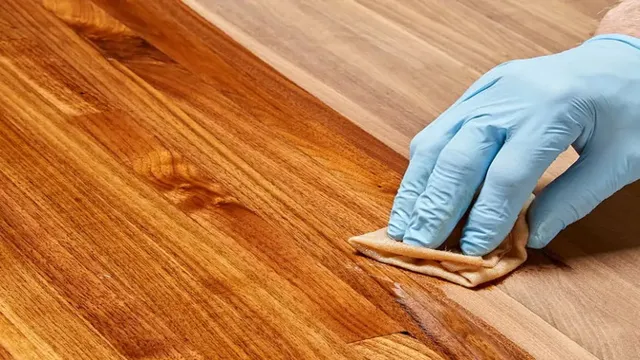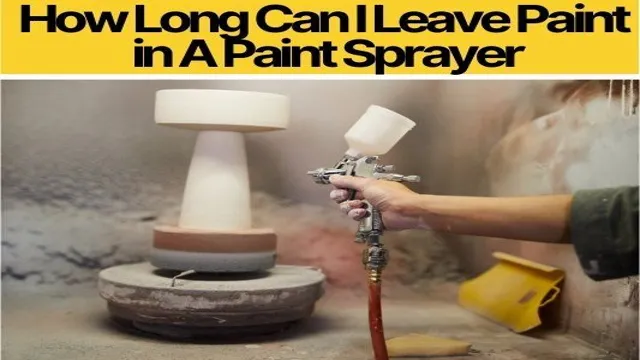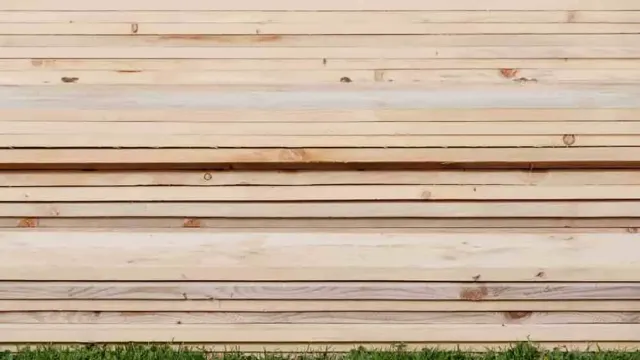What Happens If You Don’t Sand Between Coats of Polyurethane: Avoiding Common Mistakes for a Flawless Finish

If you’re in the middle of a DIY furniture project, you might wonder if skipping sanding between coats of polyurethane is a good idea. The truth is, sanding between polyurethane coats is an essential step during the finishing process, but it’s one that many people try to skip. However, doing so can have some serious consequences down the line.
Think of it like building a house without proper foundations – it might look good now, but it’s not going to hold up for long. Skipping sanding between coats can lead to a rough, bumpy finish, as well as bubbles and peeling as the polyurethane fails to properly bond with the previous layer. Furthermore, the final product might end up less durable, with the finish not protecting the wood as it should.
Ultimately, skipping sanding is a major no-no if you want a quality, long-lasting finish. Some quick tips for a successful polyurethane finish include using high-quality brushes or rollers, ensuring that each coat is fully dry before sanding, and taking care to not over-apply the polyurethane. While the process will take longer than skipping sanding between coats, it will ensure that your finished furniture stands up against wear and tear for years to come.
Understanding the Importance of Sanding between Coats
If you’re applying a new coat of polyurethane to your woodworking project, it’s important to sand between each coat. Skipping this step can lead to a variety of issues that could impact the outcome of your project. For starters, sanding between coats helps to remove any bumps or bubbles that may have formed during the previous application.
This ensures that the surface is smooth and even, allowing the next coat of poyurethane to adhere properly. Without sanding, these imperfections will continue to build up, resulting in an uneven and rough surface. Another issue that arises when you skip sanding is poor adhesion between coats.
Sanding gives the previous coat a slightly rougher surface to stick to, allowing for better adhesion and a stronger bond. Without sanding, the new coat may just sit on top of the previous one, leading to flaking or peeling over time. Overall, sanding between coats of polyurethane is essential for achieving a smooth, even, and long-lasting finish that will bring out the beauty of your project.
Ensuring Smooth, Even Finish
When it comes to painting, achieving a smooth and even finish is crucial. This is where sanding between coats comes into play, which is an often overlooked step in the painting process. Sanding between coats involves lightly sanding the surface after the first coat of paint has dried, before applying the second coat.
This process removes any imperfections, such as bumps or air bubbles, and creates a smooth surface for the next coat of paint to adhere to. Not only does sanding between coats ensure a smooth and even finish, but it also helps to increase the durability and longevity of the paint job. Remember, taking the time to properly sand between coats will lead to a professional-looking final product.
Allowing for Adhesion
Sanding is a crucial step in any painting project as it allows for better adhesion between coats. When you apply a new coat of paint without sanding, the paint may not stick as well, which can lead to uneven surfaces and peeling in the future. But by taking the time to sand between each coat, you create a rough texture that promotes adhesion, allowing the new layer to bond securely with the previous one.
It’s similar to how Velcro works; the rough side sticks to the soft side, creating a strong bond. So, be sure not to skip the sanding step when painting and give your coats a chance to adhere well for a smooth and long-lasting finish.
Maintaining a Professional Look
When it comes to achieving a professional look for your woodworking projects, sanding between coats of finish should be a crucial aspect to consider. Understanding the importance of sanding between coats can make a significant difference in the final outcome of your project. Not only will it help to remove any rough surfaces or imperfections, but it also ensures proper adhesion of the next coat of finish.
Without sanding between coats, the layers of finish may not bond correctly, resulting in a less polished and durable finish. Think of it like painting a wall without priming first; the final outcome wouldn’t be as smooth or long-lasting. So, don’t skip the sanding step and take the time to achieve the best possible results for your woodworking projects.
Issues That May Arise from Skipping Sanding
If you’re looking to refinish your woodwork, you may wonder what happens if you don’t sand between coats of polyurethane. Skipping sanding can lead to a rough, uneven finish that doesn’t adhere well. Sanding is crucial to remove any imperfections from the previous coat of polyurethane and to create a smooth surface for the next coat.
Without sanding, you may notice a bumpy texture and streaks or bubbles in the final finish. Additionally, the polyurethane may not bond well to the wood, leading to peeling or other issues over time. It’s important to take your time and sand between coats of polyurethane to achieve a beautiful, durable finish on your woodwork.
Peeling or Flaking of the Polyurethane
If you’re looking to refinish wooden furniture, it’s essential to sand it down thoroughly before applying any polyurethane. Skipping this step may lead to issues like peeling or flaking of the polyurethane, which can leave your furniture looking unsightly. Sanding is crucial because it smooths the surface of the wood, allowing the polyurethane to penetrate better and adhere correctly.
Without sanding, the polyurethane may not be able to bond correctly, leading to peeling or flaking. Moreover, it’s essential to remove any existing finish, paint, or varnish before sanding because these coatings may limit the polyurethane’s ability to bond correctly. Paying close attention to the sanding stage can save you time, money, and frustration down the line, resulting in a smooth, long-lasting, and beautiful finish.
Bubbles or Craters in the Finish
When it comes to DIY painting projects, skipping the sanding stage can result in bubbles or craters in the finish. This is because sanding not only smooths the surface but also creates tiny scratches that allow the new paint to adhere better. When paint is applied to an unsanded surface, it may stick to any grease or dirt that was not removed, leading to an uneven application and eventual bubbling or cracking.
Proper sanding removes dirt, old paint, and any other impurities that may prevent the new paint from sticking. Taking the time to sand the surface will ensure a smooth and even finish, helping the paint adhere properly, and avoiding any potential issues with bubbles or craters in the final result. So, before you start your next painting project, make sure to allocate some time for sanding to achieve the best results for your hard work.
Avoiding Issues with Polyurethane
If you don’t sand between coats of polyurethane, you could end up with a rough and uneven finish. Sanding between coats removes any bumps or imperfections in the surface and allows the next coat of polyurethane to adhere more smoothly. Skipping this step can cause the polyurethane to peel or flake off in the future.
It’s essential to use the proper grit sandpaper and to ensure the surface is clean and free of dust before applying the next coat. While it may be tempting to rush the process, taking the time to sand between coats will result in a more professional-looking finish. So don’t skimp on sanding if you want your polyurethane project to turn out smooth and sleek!
Proper Sanding Techniques
Proper Sanding Techniques for Avoiding Issues with Polyurethane If you want to avoid issues with polyurethane, it all starts with proper sanding techniques. Whether you’re refinishing wood furniture or sealing a new project, sanding is a crucial step that shouldn’t be skipped. When it comes to avoiding issues with polyurethane, the goal is to create a smooth, even surface that the polyurethane can adhere to properly.
This means starting with a coarse sandpaper grit and working your way up to a finer grit, finishing with a 220 grit for the smoothest finish. It’s also important to sand with the grain of the wood and to not press too hard, as this can create uneven spots and scratches in the surface. By taking the time to properly sand before applying polyurethane, you can ensure a beautiful and long-lasting finish that will withstand the test of time.
Choosing the Right Grit Sandpaper
Choosing the right grit sandpaper is essential to avoid issues with polyurethane. When it comes to sanding, the grit of sandpaper will determine the degree of abrasion. A fine-grit sandpaper will produce a smoother finish, while a coarse-grit sandpaper will remove more material.
The most common grits for sanding wooden surfaces are 80, 120, and 220. Typically, you’ll want to start with a lower grit sandpaper and slowly work your way up to a higher grit. This process will prepare the surface for staining or painting.
When it comes to polyurethane, the grit of sandpaper isn’t as critical as the preparation of the surface. Before applying polyurethane, you will want to clean the surface thoroughly and allow it to dry completely. If there are any imperfections or rough areas on the surface, you can use a higher grit sandpaper to smooth it out.
Remember, a well-prepared surface will result in a flawless finish.
Conclusion
Skipping the sanding between coats of polyurethane is like skipping the vegetables in your diet – it may seem like a time-saver, but ultimately leads to a less-than-desirable outcome. Without proper sanding, your surfaces will be rougher than a sea captain’s beard, and not even the smoothest of smooth jazz playlists can cover up those imperfections. So be kind to your surfaces, and sand away between those coats of polyurethane – your furniture (and taste buds) will thank you for it.
“
FAQs
1. Q: Why is sanding between coats of polyurethane important? A: Sanding between coats of polyurethane helps to create a smooth surface, remove imperfections, and promotes adhesion of the next coat. 2. Q: Do I have to wait a certain amount of time before sanding between coats of polyurethane? A: Yes, it is recommended to wait at least 2-4 hours before sanding between coats of polyurethane to ensure proper drying time. 3. Q: Can I skip sanding between coats of polyurethane? A: While it is possible to skip sanding between coats, it can negatively affect the final result by creating a rough surface, visible imperfections, and weakened adhesion. 4. Q: What happens if I don’t sand between coats of polyurethane? A: Not sanding between coats of polyurethane can lead to a final result with visible bumps and imperfections. The lack of adhesion between coats can also cause the finish to peel or flake over time. 5. Q: What grit sandpaper should I use for sanding between coats of polyurethane? A: It is recommended to use a fine-grit sandpaper, such as 220, for sanding between coats of polyurethane. 6. Q: How many coats of polyurethane should I apply? A: The number of coats of polyurethane depends on the desired level of protection and appearance. Typically, 2-3 coats are recommended. 7. Q: Can I sand between the final coat and still get a shiny finish? A: Yes, it is possible to sand between the final coat of polyurethane and still achieve a shiny finish by using a fine-grit sandpaper and buffing the surface with a polishing compound.







